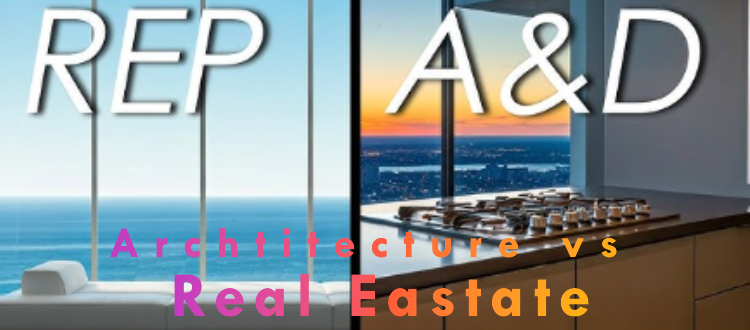Real estate photography focuses on selling properties quickly. Architecture photography highlights the design and aesthetics of buildings.
Real estate and architecture photography serve distinct purposes. Real estate photography aims to attract buyers by showcasing properties in the best possible light. This involves capturing spaciousness, lighting, and appealing angles to make the property desirable. On the other hand, architecture photography emphasizes the art and design of buildings.
It focuses on details, symmetry, and unique features that highlight the architect’s vision. Both types of photography require different skills, equipment, and approaches to effectively achieve their goals. Understanding these differences is crucial for photographers and clients to achieve the desired outcome in their respective fields.
Purpose And Audience
Photography serves different purposes in real estate and architecture. Understanding these differences helps create impactful images. The audience also varies significantly, influencing the style and focus of the photos.
Real Estate Goals
Real estate photography aims to attract potential buyers. The focus is on showcasing the property’s best features. Images must be bright and inviting. The goal is to make the property look spacious and appealing. Real estate agents use these photos in listings and advertisements.
Key elements in real estate photography:
- Wide-angle shots
- Bright lighting
- Clean and decluttered spaces
- Highlighting key features
Architectural Intent
Architectural photography focuses on design and aesthetics. The audience includes architects, designers, and artists. These photos capture the building’s unique design elements. The goal is to highlight the architectural beauty and style.
Key elements in architectural photography:
- Detailed shots
- Creative angles
- Focus on materials and textures
- Artistic composition
Styling And Composition
Styling and composition set real estate and architecture photography apart. Both aim to showcase properties, but their approaches differ significantly.
Real Estate Techniques
Real estate photography highlights the home’s best features. The goal is to attract buyers. Techniques include:
- Wide-angle lenses for spacious looks
- Bright lighting to create an inviting feel
- Decluttering spaces to focus on key areas
Real estate photos often stage rooms with neutral decor. This helps potential buyers imagine themselves in the space.
Architectural Aesthetics
Architecture photography focuses on the design and structure. Photographers capture the essence of the building.
- Unique angles to highlight design elements
- Natural lighting to show true colors
- Detail shots for architectural features
Architectural photos often use minimal staging. The goal is to let the building’s design speak for itself.
| Aspect | Real Estate Photography | Architecture Photography |
|---|---|---|
| Goal | Attract Buyers | Showcase Design |
| Lighting | Bright and Inviting | Natural and True |
| Staging | Neutral Decor | Minimal Staging |
| Focus | Key Home Features | Architectural Details |
Understanding these differences is vital. It ensures each photo meets its specific purpose effectively.
Lighting Considerations
Lighting is crucial in both real estate and architecture photography. Each field has unique lighting needs. Understanding these differences will improve your photos.
Natural Light Usage
Natural light is a favorite in both real estate and architecture photography. But its usage varies. Real estate photography often uses natural light to create a warm, inviting atmosphere. This helps potential buyers feel at home.
Architecture photography uses natural light differently. It focuses on the play of light and shadow. This highlights the building’s design and structure. The goal is to show the architect’s vision.
Here are some key points:
- Real estate photos use soft, even natural light.
- Architecture photos may use dramatic natural light.
- Time of day matters for both types of photography.
Artificial Light Setup
Artificial light plays a different role in real estate and architecture photography. Real estate photography often needs extra light sources. This ensures all areas of a room are well-lit. It makes spaces look larger and more appealing.
Architecture photography uses artificial light to highlight details. This can include exterior lighting or specific indoor fixtures. The aim is to enhance the design elements.
Key differences include:
- Real estate uses multiple light sources to fill spaces.
- Architecture uses strategic lighting to enhance features.
- Artificial light color temperature is crucial in both fields.
Equipment And Tools
The equipment and tools used in real estate and architecture photography are crucial. They determine the quality and style of the images produced. Although both types of photography require professional gear, the tools and techniques can differ significantly.
Cameras And Lenses
A high-quality camera is essential for both real estate and architecture photography. For real estate, wide-angle lenses are often used. They capture more of the room in a single shot. This helps to show the space more effectively.
In architecture photography, specialized lenses like tilt-shift lenses are common. These lenses correct perspective distortions. They are critical for capturing tall buildings and intricate designs.
Here’s a quick comparison of the types of lenses used in both fields:
| Type of Photography | Common Lenses |
|---|---|
| Real Estate | Wide-angle lenses |
| Architecture | Tilt-shift lenses |
Drones And Accessories
Drones have become vital tools in both real estate and architecture photography. They provide aerial views that add a unique perspective.
In real estate, drones capture the entire property. This includes the house and surrounding land. They are useful for showing the property’s size and layout.
For architecture photography, drones highlight the design and structure of buildings. They can capture angles that are impossible from the ground.
Important drone accessories include:
- Extra batteries
- Propeller guards
- High-resolution cameras
These accessories ensure longer flight times and better image quality.
Investing in the right equipment and tools enhances the final images. This makes a significant difference in the success of the photographs.
Client Expectations
Understanding client expectations is crucial in both real estate and architecture photography. Each sector has unique demands and goals. Let’s dive into these differences and see what each client expects.
Real Estate Agents
Real estate agents want quick results. They aim to sell or rent properties fast. Photos should be bright, wide, and inviting. The goal is to attract potential buyers or renters. Agents prefer photos that highlight space and functionality.
Speed is key. Agents often need photos within 24 to 48 hours. They may also require virtual tours or video walkthroughs. This helps them market the property more effectively. Agents look for photos that make the property look its best.
Architects And Designers
Architects and designers focus on details. They want to showcase their work and creativity. Photos should capture the essence of the design. This includes textures, materials, and unique features. The goal is to highlight the artistry and craftsmanship.
Quality over speed. Architects and designers prefer well-thought-out shots. They may require specific angles and lighting. Photos must convey the story behind the design. These professionals often use photos for portfolios and publications.
| Aspect | Real Estate Agents | Architects and Designers |
|---|---|---|
| Focus | Space and functionality | Details and artistry |
| Speed | Quick turnaround (24-48 hours) | Quality over speed |
| Usage | Marketing and sales | Portfolios and publications |
| Additional Requirements | Virtual tours, video walkthroughs | Specific angles, lighting |
Legal And Ethical Issues
Legal and ethical issues play a critical role in real estate and architecture photography. Different rules apply for each, creating unique challenges for photographers. Understanding these issues ensures compliance and protects your work.
Property Releases
Property releases are essential in real estate photography. Permission from property owners is required before taking photos. This protects against legal disputes.
For architecture photography, property releases may not always be required. Public buildings usually don’t need releases. Private properties, however, still do.
| Real Estate Photography | Architecture Photography |
|---|---|
| Always needs property releases | May need property releases for private properties |
| Protects against legal issues | Public buildings often exempt |
Copyright Concerns
Copyright concerns are significant for both fields. Photographers own the copyright to their images.
- Real estate photography often involves transferring copyright to clients.
- Architecture photography retains copyright with the photographer.
Understanding these differences ensures you manage your rights effectively. Always discuss copyright terms before starting any project.
Market Trends
Market trends shape how photographers approach real estate and architecture. Both fields grow but differ in focus. Understanding these trends helps photographers.
Real Estate Market
The real estate market constantly changes. Demand for housing drives real estate photography. Homebuyers want clear, appealing images of properties. Real estate agents need these images to sell homes quickly. They focus on showing the best features of a property.
- High demand for clear photos
- Focus on property features
- Quick turnaround required
Drone photography has become popular. It offers unique aerial views. Virtual tours also rise in demand, allowing buyers to see homes online.
Architectural Developments
Architectural photography focuses on buildings and structures. This field values artistic shots. Images highlight design and details. The market for this type of photography grows with new building projects.
- Emphasis on design and details
- Artistic and creative shots
- Growth with new projects
Sustainability influences architecture. Green buildings and eco-friendly designs are popular. Photographers capture these elements to show innovation.
Conclusion
Real estate and architecture photography serve distinct purposes. Real estate photography focuses on selling properties. Architecture photography emphasizes design and aesthetic. Both require unique skills and techniques. Understanding these differences can enhance your photography business. Choose the right approach for your project and achieve better results.

